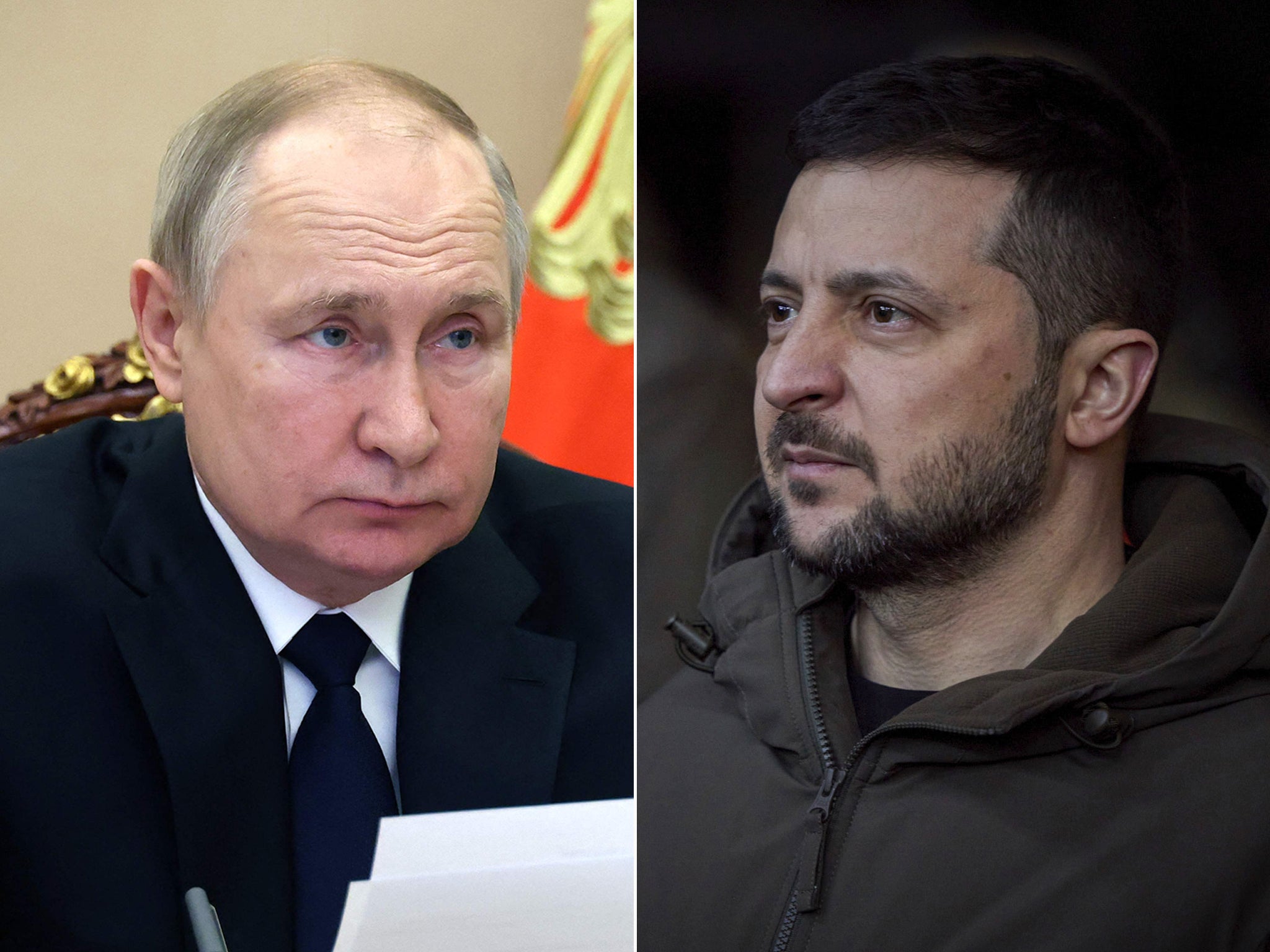What will Zelensky visiting Washington and Putin going to Minsk mean for the war in Ukraine?
A public display of American support at this time will be regarded as a great morale booster for the Ukrainian leader and his people, writes Kim Sengupta


Your support helps us to tell the story
From reproductive rights to climate change to Big Tech, The Independent is on the ground when the story is developing. Whether it's investigating the financials of Elon Musk's pro-Trump PAC or producing our latest documentary, 'The A Word', which shines a light on the American women fighting for reproductive rights, we know how important it is to parse out the facts from the messaging.
At such a critical moment in US history, we need reporters on the ground. Your donation allows us to keep sending journalists to speak to both sides of the story.
The Independent is trusted by Americans across the entire political spectrum. And unlike many other quality news outlets, we choose not to lock Americans out of our reporting and analysis with paywalls. We believe quality journalism should be available to everyone, paid for by those who can afford it.
Your support makes all the difference.Two international visits this week are strong indicators that the Ukraine war is unlikely to end soon, and that another round of prolonged and bloody fighting is expected to unfold in the near future.
Volodymyr Zelensky’s journey to Washington, his first foreign trip since the Russian invasion began, comes as Congress is due to vote on a $45bn (£37bn) assistance package for his country – the biggest tranche from the US so far in the conflict.
At the same time, Vladimir Putin has met Alexander Lukashenko in Minsk as reports persist that the Kremlin may try to use Belarus once more as a launchpad for its next offensive, with yet another attempt to capture Kyiv and impose regime change.
The proposed US aid package is more than the $37bn requested by Joe Biden, and shows a continuing commitment to Ukraine’s efforts to defend itself – something that might have been diluted if the Republicans had made more gains in last month’s midterm elections and there had been an infusion of Donald Trump-backed candidates.
Some supporters of Trump, who was accused of being the Muscovian candidate during his time in the White House, have attacked America’s support for Ukraine in the war. Mainstream Republicans have raised the question of whether a “blank cheque” has been offered to Kyiv. But it appears that, for the time being at least, the Republicans in the Senate and House of Representatives will continue the funding, though they may ask for greater scrutiny of the way in which the money is spent.
Zelensky will address a joint session of Congress and meet with both Republican and Democratic leaders following a bilateral meeting with Biden and his security team. Since the early months of the Russian invasion, Ukraine has made a remarkable recovery on the battlefield, recapturing ground in the Donbas, the Kharkiv oblast, and Kherson in the south. However, the population is going through immense hardship now, due to targeted and sustained attacks on infrastructure and the resulting loss of heating and power. A public display of American support at this time will be regarded as a great boost to morale.
For Zelensky himself, standing in the full glare of publicity in the Capitol will illustrate how much things have changed since the first days of the war, when he refused Biden’s offer to evacuate him and his family, and the subsequent months of sending videos from his secret bunker.
Inviting the Ukrainian president to address Congress, the House speaker Nancy Pelosi said: “In the face of Putin’s horrific atrocities, Ukrainian freedom fighters have inspired the world with an iron will and an unbreakable spirit ... your courageous, patriotic, indefatigable leadership has rallied not only your people, but the world, to join the front lines of the fight for freedom.”
Zelensky and his officials have been asking the US for weaponry that will enable them to carry out more proactive operations, and after the way in which the high-mobility artillery rocket systems (HIMARS) and multiple-launch rocket systems (MLRS) helped change the tide of the war, the Biden administration is said to be actively considering the requests.
In the more immediate term, Ukraine is due to receive Patriot air-defence systems, to be deployed against incoming ballistic and cruise missiles, as well as joint direct attack munitions (JDAM) – “bunker busters” – which can be used in air strikes against entrenched Russian positions. This comes after the dispatch of national advanced surface-to-air missile systems (NASAMS) by Washington last month.
As for Putin, this was his first visit to Minsk since 2019. He was accompanied by his foreign minister, Sergei Lavrov, and his defence minister Sergei Shoigu. On a previous visit to Minsk earlier this month, Shoigu signed a defence pact – and Belarus has just announced that it has completed military readiness checks, a precursor to calling up reserves. Mobilisation would raise the number of troops Belarus is able to deploy from around 18,000 to almost 200,000.
The question remains, however, whether Lukashenko is willing to be dragged into a conflict in which he appears to have little to gain and a lot to lose. The idea of participating in the war is already highly unpopular among the Belarusian population, and further, the president would be exposing his country to sweeping international sanctions, as well as retaliatory Ukrainian attacks – something Kyiv should be able to mount effectively, especially if it gets the tranche of Western armaments Zelensky is seeking as part of his Washington visit.
Join our commenting forum
Join thought-provoking conversations, follow other Independent readers and see their replies
Comments